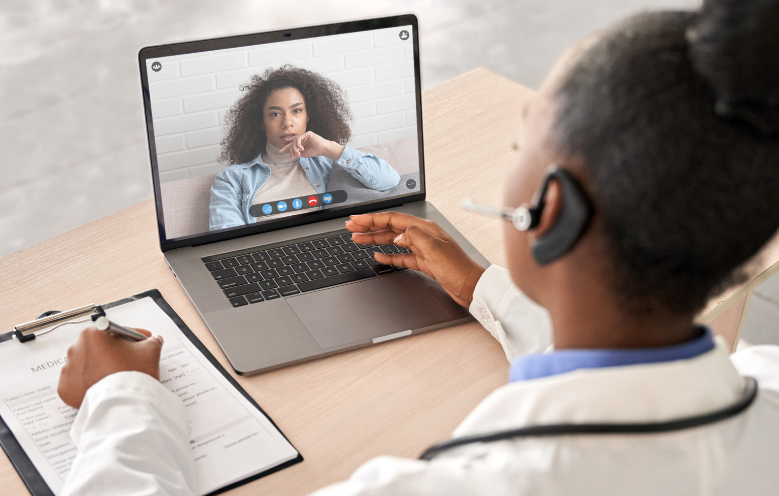
Introduction
Often in healthcare, the importance of the power of connection is forgotten due to the importance of other factors such as process and technology. However, connection plays a major role in healthcare systems. Whether that connection is fostered between stockholders and healthcare professionals, or the connection is between patients and clinicians, it’s important to factor in the importance of connection. Overall, connection in healthcare leads to enhanced patient outcomes, more streamlined processes, and increased innovation.

People
Power of Connection between Providers and Patients
One of the biggest connections that can be made in healthcare is the connection between patients and their providers. This means that doctors have a responsibility to their patients to foster positive relationships [1]. Furthermore, doctors must ensure that their relationship with their patients delivers optimized healthcare outcomes [1]. Oftentimes, this requires effective communication skills, empathy, trust, informed consent, and established boundaries [1]. Overall, patients who have strong relationships with their doctors adhere better to treatment and are more engaged [1]. Therefore, it’s critical that patients feel valued and heard so they can become more active participants in their care journey.
Power of Connection Between Healthcare Professions
Connection between healthcare providers is also essential in healthcare, specifically for delivering high-quality care. This can mean connection between stakeholders and their staff, or connections between healthcare providers such as physicians, specialists, nurses, etc. This often means that interdisciplinary connections exist between many healthcare levels that promote effective collaboration. For instance, healthcare teams can communicate with one another and develop comprehensive care plans catered to the unique needs of patients. This in turn will result in more personalized and effective treatment plans. Additionally, this can also mean that stakeholders consider the end user such as nurses or doctors who will be affected by their implementations. Therefore, continuous feedback is essential to support the success of healthcare staff and to promote seamless connections.

Process
The Power of Connection Promotes Care-Coordination
Streamlining care coordination processes is essential for optimizing healthcare delivery and enhancing patient experiences. This can mean implementing integrated care pathways and having standardized protocols that make sharing easier. This can also mean making user-friendly digital communication platforms that encourage collaboration between care teams. Furthermore, improved processes can result in improved patient safety [2]. This is due to features being implemented like medication alerts, reminders, better tracking systems, and better availability of data [2]. Overall, streamlining care coordination between healthcare staff promotes connection, resulting in timely care and preventing adverse health effects in patients. Additionally, streamlined care coordination can lessen the burden on healthcare professionals and make them more engaged in their work.
The Power of Connection Provides Continuous Improvement in Processes
When discussing processes, it’s important to understand that improving care must be a continuous process. This means that feedback mechanisms are needed between patients and doctors to ensure that treatment plans are still effective. Oftentimes this is done with data analytics to test how effective the process is at handling challenges and the growing needs of patients. This also means that regular performance assessments are needed so healthcare professionals know which areas to improve. Overall, fostering continuous learning and adaptation results in refined processes, optimized resource utilization, and enhances patient safety.

Technology
Technology is often heavily focused as an area of improvement in healthcare. This is due to the widespread of technology that allows for better diagnosing and healthcare delivery. However, it’s important to consider people and processes when discussing technology. This is because technology should promote connections between people and be the driver for streamlined processes. Therefore, technologies such as telemedicine, health information exchange platforms, and even AI should consider the end users and the processes the technologies will be implemented into. Furthermore, technology should be used to overcome biases in care, promote care collaboration, and improve clinical decision-making. Therefore, technology should be used to enhance patient safety and empower healthcare professionals to deliver high-quality care.

Conclusion
Overall, the power of connection expands past just the connection between patients and providers. It must also take into account improved processes for fostering connection and technology to drive the processes. Therefore, by fostering strong connections within healthcare systems, providers can improve collaboration, streamline workflows, and use technology to deliver personalized and effective care plans to patients. In part two of this article, we will delve deeper into the power of connection and the transformative potential it has on patient engagement and innovation.
HITS
HITS provides healthcare management services & works with doctors to develop health informatics tools that promote safe and secure care. We take pride in our services and settle for nothing other than 100% quality solutions for our clients. Having the right team assist with data sharing is crucial to encouraging collaborative and secure care. HITS also focuses on transforming health care by analyzing integrated medical solutions and evaluating information systems. Our goal is to enhance individual and population health outcomes, improve patient care, and strengthen the clinician-patient relationship.
References
- https://www.news-medical.net/health/DoctorPatient-Relationship.aspx#:~:text=A%20doctor%E2%80%93patient%20relationship%20(DPR,treatment%20in%20an%20agreeable%20manner.
- https://www.acog.org/clinical/clinical-guidance/committee-opinion/articles/2015/01/patient-safety-and-health-information-technology#:~:text=Benefits%20of%20Health%20Information%20Technology,-Most%20obstetrician%E2%80%93gynecologists&text=The%20potential%20to%20improve%20patient,availability%20of%20complete%20patient%20data.